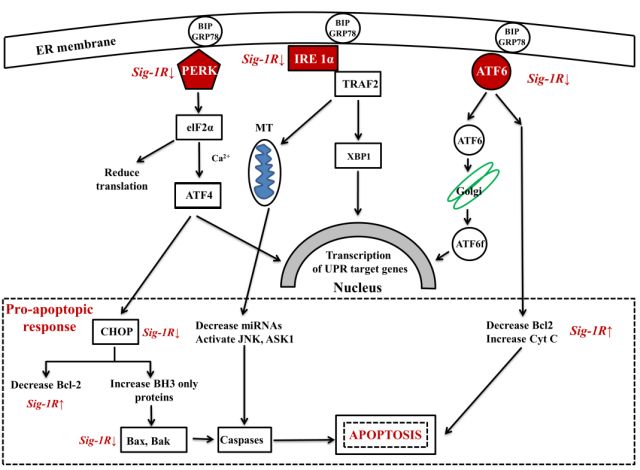MTA-SZTE Biomimetic Systems Research Group
Principal investigator: Gábor Tóth
Sigma-1 receptor agonist

The sigma-1 receptor (Sig-1R), a well-known ER (endoplasmic reticulum)-chaperone localizes in the MAM (mitochondria-associated ER-membrane). It serves for Ca2+-signaling between the ER and mitochondria, involved in ion channel activities and especially important during neuronal differentiation. Sig-1R acts as central modulator in inter-organelle signaling. Sig-1R helps cell survival by attenuating ER-stress. According to sequence based predictions Sig-1R is a 223 amino acid protein with two transmembrane (2TM) domains. The X-ray structure of the Sig-1R [1] showed a membrane-bound trimeric assembly with one transmembrane (1TM) region. Despite the in vitro determined assembly, the results of in vivo studies are rather consistent with the 2TM structure. The receptor has unique and versatile pharmacological profile. Dimethyl tryptamine (DMT) and neuroactive steroids are endogenous ligands that activate Sig-1R. The receptor has a plethora of interacting client proteins. Sig-1R exists in oligomeric structures (dimer-trimer-octamer-multimer) and this fact may explain interaction with diverse proteins. Sig-1R agonists have been used in the treatment of different neurodegenerative diseases e.g. Alzheimer’s and Parkinson’s diseases (AD and PD) and amyotrophic lateral sclerosis. Utilization of Sig-1R agents early in AD and similar other diseases has remained an overlooked therapeutic opportunity [2].
Our goal is to find new selective Sig-1R agonist and investigate they mode of action. To this end we use the tools of computational drug design from virtual screening to molecular dynamics based methods. The selected compounds will be tested using in-vitro radioligand binding assay. Their neuroprotective effect via the suppression of ER stress will be tested on SH-SY5Y cell line.
[1] Schmidt HR, Zheng SD, Gurpinar E, Koehl A, Manglik A, Kruse AC: Crystal structure of the human sigma 1 receptor. Nature, 2016, 532(7600), 527-530.
[2] Penke B, Fulop L, Szucs M, Frecska E: The Role of Sigma-1 Receptor, an Intracellular Chaperone in Neurodegenerative Diseases Current Neuropharmacology, 2018, 16(1), 97-116.

